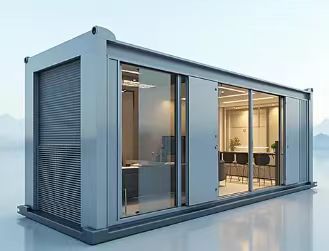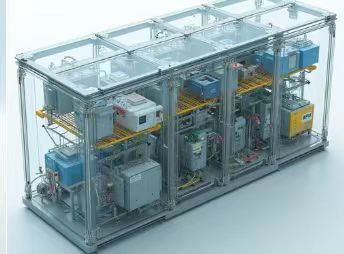So you’re diving into energy storage systems, huh? Whether you’re setting up a home setup or a big industrial one, the design stuff matters way more than you might think. It’s not just about slapping some batteries together and calling it a day. There’s a whole checklist to make sure these things work, stay safe, and don’t fizzle out when you need them most. Let me break it down like we’re chatting over coffee.
First off, the basics: size and power. Those storage cabinets? Most are between 50kW to 200kW in power, with 100kWh to 400kWh capacity. And if you need more, you can just hook a few together—handy, right? For the bigger players, like container systems, you’re looking at 2.5MWh or 5MWh. But honestly, it all depends on what you need. No point in overcomplicating it with a huge system if a small one does the job.
Then there’s the physical stuff—dimensions and layout. The cabinet size isn’t random; it has to fit where you’re putting it, plus leave room for all the bits inside: batteries, inverters, control systems. Ever tried fixing something in a cramped space? Not fun. So good design leaves enough room to get in there and tweak things without breaking a sweat. And arranging parts so they don’t interfere with each other? Total game-changer for efficiency.
Oh, and modular design? Non-negotiable. Life changes, right? Maybe you start small but need more power later. Modular means you can add or swap parts without rebuilding the whole thing. Smart move.
Safety first—always. Let’s start with the batteries. You’ve probably heard of lithium iron phosphate (LFP) batteries. Yeah, those are the ones to use here. They need to meet GB/T 36276 standards—trust me, that’s not just red tape. They last longer and are way safer. Then there’s the battery management system (BMS), which is like a babysitter for your batteries. It checks temps, voltages, all that good stuff, and flags issues before they blow up (literally). Oh, and temperature sensors? More is better. Each little battery cell should have one, plus extras at the positive and negative ends. Better safe than sorry.
Fire risks? Scary, but manageable. Cabinets need阻燃材料 (flame-retardant materials), and a built-in fire alarm and extinguisher system. The BMS helps here too—if a battery starts acting up, it shuts things down fast.
Electrical safety isn’t sexy, but it’s crucial. Overvoltage? Overcurrent? Short circuits? The system needs to catch those and cut power before things go wrong. And grounding? Make sure the外壳 (outer shell) is properly connected to the ground. No one wants a shock while checking the system.
Moving on to the electrical guts. Connections matter. Wires and connectors need to be top-notch—loose ones cause heat, which causes problems. Big systems? They heat up more, so add cooling for those connections. No cutting corners here.
The inverter? It’s the middleman between batteries and the grid. Needs to hit GB/T 34120 standards. Single module, single stage—keeps it simple. And efficiency? 98% or higher when it’s working, minimal loss when it’s idle. Oh, and it should handle a little shaking—vibration tests are a must.
Monitoring systems are your eyes and ears. Real-time data on battery voltage, temp, how much juice is left. Remote access is a lifesaver too—check on things from your phone, adjust as needed. It’s what makes “peak shaving” or backup power actually work.
Heat is the enemy of batteries, so cooling matters. Small cabinets? Natural airflow might be enough—smart vent placement, maybe some heat sinks. Big systems? Fans work, but they’re noisy. AC units? Better at keeping temps steady, but they cost more and use extra power. Pick your poison.
Smart tech isn’t just for phones. These systems need brains too. Remote monitoring, automatic adjustments, even troubleshooting—no more driving out to check every little thing. And communication? They gotta talk to the grid or other energy sources. It’s like a team huddle for your power setup.
Wherever you put these systems, they need to tough it out. IP54 rating is the minimum—keeps dust and water out. Outdoor units? Sun, rain, wind—they need special materials to survive. And temperature range? They should handle -25°C to 55°C when stored, -20°C to 45°C when moving. Humidity? Keep it under 95%. No divas allowed.
Flexibility is key. Need more capacity later? The design should let you add on easily. Batteries wear out—swapping modules should be a 30-minute job, not a full rebuild. And they should work in different spots: grid support, pairing with solar/wind, backup for stores or offices. One size fits most, basically.
Installing and fixing them shouldn’t be a nightmare. Easy to set up, easy to take down if you move. Parts should be easy to reach—no disassembling the whole thing to replace a fan. Minimize downtime, maximize convenience.
Last but not least: be kind to the planet. Use recyclable materials where you can. And testing? Every system needs to pass factory checks and on-site tests before going live. No “trust me, it works” here—get the report.
So yeah, energy storage design is a lot, but it’s all about making sure these systems do their job: keep the power on, stay safe, and adapt when life throws curveballs. Nail these points, and you’ve got a system that’ll last. Simple as that.
If you're interested in learning more about our solar energy storage offerings, we encourage you to explore our product line. We offer a range of panels and battery that are designed for various applications and budgets, so you're sure to find the right solution for your needs.
Website:www.fgreenpv.com
Email:Info@fgreenpv.com
WhatsApp:+86 17311228539
Post time: Aug-21-2025













